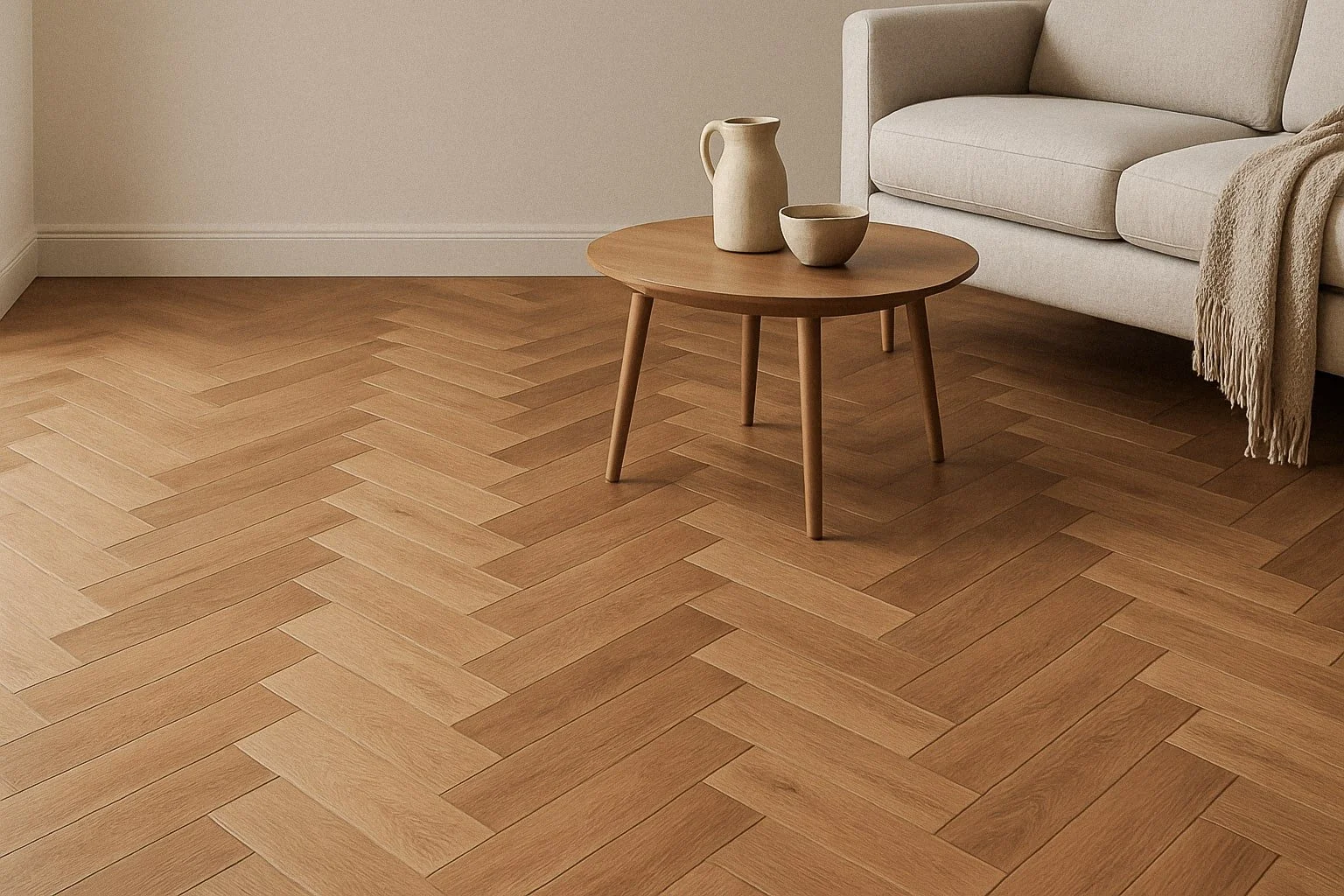
Engineered Timber Flooring Trends for 2026
Choosing a timber floor isn’t just about how it looks - it’s about creating a surface that stands up to everyday life and brings character to your home. In 2026, timber flooring is both a design statement and a long-lasting foundation. Here are the top trends we’re seeing and how to choose the right one for your project.
1. Warm, Mid-Tone Woods Make a Comeback
Gone (or at least retreating) are the ultra-grey washed and pale white-washed woods. Instead, the most compelling engineered timber choices for 2026 are warm, mid-tone woods - honey, caramel, amber, chestnut and natural oak with softer golden undertones.
These tones bring instant warmth, richness and a lived-in feel. For a home in New Zealand with its variable light and climate, a warm mid-tone plank hits that sweet spot: natural, inviting, and adaptable to both modern and classic interiors.
Design tip: When you show clients your engineered oak range, highlight the warms-undertone finishes (for example “honey oak” rather than “bleached oak”) and show how they adapt beautifully to varied décor palettes.
2. Wide Planks, Long Boards & Elegant Patterns
The layout and scale of the boards are stepping up. For 2026:
Wide planks / long boards - fewer seams, broader flow, great for open plan living.
Pattern play (herringbone, chevron, parquet) - layouts that draw the eye, make the floor a feature rather than just a surface.
What this means for your engineered flooring options: stocking or offering wider width boards and enabling pattern installations (chevron/herringbone) will help you differentiate.
Design tip: For larger living areas, suggest a 190-240mm wide board with a straight run. For entry halls or feature zones, propose herringbone in the same species/finish to create a subtle change in layout without changing material.
3. Finishes and Textures: Matte, Wire-Brushed & Natural Oils
Shiny is out. For 2026, finish and texture matter almost as much as colour. The trends:
Matte or satin finishes over high gloss - less glare, more natural appearance, less evidence of wear.
Wire-brushed, hand-scraped textures - adding character, highlighting the grain, giving a tactile feel.
Natural oils or hard-wax oils (especially in engineered flooring) - they enhance the timber’s feel and texture, giving a lived-in aesthetic.
Design tip: When recommending an engineered floor, factor in the finish. Highlight that an oiled/wire-brushed board will hide daily wear better and feel warmer underfoot than a flat lacquered board - especially for homes with pets or kids.
4. Colour Trends: Move Away from Grey & Toward “New Neutrals”
The cool grey plank era is giving way. 2026 is all about warm neutrals and woods with character. Here’s what to know:
Rather than stark greys, the “new neutrals” lean into greige (grey + beige), taupe and soft warm browns.
Darker rich woods (muted chocolate browns) are also coming back as luxurious alternatives.
For your NZ market: this means engineered timber finishes that avoid too-cool undertones (blue/grey) and instead embrace warm undertones that adapt to natural light, furniture and room temperature variations.
Design tip: Provide clients with samples of “warm mid-brown”, “greige oak” and “chocolate brown” finishes and let them observe how the tone shifts across morning/evening light. Encourage them to match the undertone of the floor with their joinery and furniture woods for harmony.
5. Flooring as Design Feature - Not Just a Background
Perhaps the most exciting shift: floors are being treated as design anchors, not just functional surfaces. For 2026:
Engineered timber in herringbone or chevron becomes a feature zone rather than the default plank.
Mixed plank widths or alternating textures add subtle visual interest.
Transition zones (e.g., living area to kitchen) might use a different plank width/finish/layout to define the space subtly.
For Timber Flooring Specialists, this is a great chance to upsell: yes, we install the engineered floor - but we also design how the floor layout contributes to the space.
Design tip: On your Projects page and showroom, include at least one “feature zone” project: e.g., engineered oak in herringbone in the entry, then straight-laid in wide planks in the living area - emphasising that flooring is part of the architecture.
Final Thoughts
For 2026, your engineered timber flooring story is strong. By emphasising warm mid-tone woods, wide planks and elegant patterns, textured matte finishes, subtle yet character-rich colour choices, and treating the floor as a design feature - you’re offering clients something contemporary, stylish and smart.
You might say: “Pick a timber floor that not only endures, but gives your room personality underfoot.”
And remember: these trends are not about chasing fads - they’re about evolving quality, design-forward thinking and value over time. With your expertise in pre-finished engineered timber and strong installation practices, you’re well placed to lead the way.
